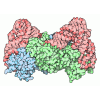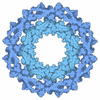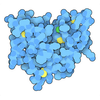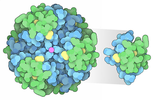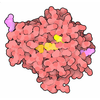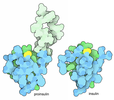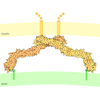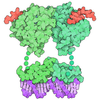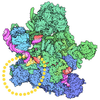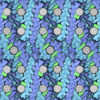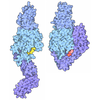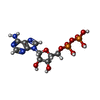+ データを開く
データを開く
- 基本情報
基本情報
| 登録情報 | データベース: PDB / ID: 8fdu | ||||||||||||
|---|---|---|---|---|---|---|---|---|---|---|---|---|---|
| タイトル | Engineered human dynein motor domain in the microtubule-unbound state with LIS1 complex in the buffer containing ATP-Vi (local refined on AAA3-AAA5 and LIS1) | ||||||||||||
 要素 要素 |
| ||||||||||||
 キーワード キーワード | MOTOR PROTEIN / Dynein / motor domain / microtubule-unbound / LIS1 | ||||||||||||
| 機能・相同性 |  機能・相同性情報 機能・相同性情報microtubule cytoskeleton organization involved in establishment of planar polarity / ameboidal-type cell migration / establishment of planar polarity of embryonic epithelium / 1-alkyl-2-acetylglycerophosphocholine esterase complex / corpus callosum morphogenesis / L-selenocysteine biosynthetic process / maintenance of centrosome location / platelet activating factor metabolic process / serine-tRNA ligase / serine-tRNA ligase activity ...microtubule cytoskeleton organization involved in establishment of planar polarity / ameboidal-type cell migration / establishment of planar polarity of embryonic epithelium / 1-alkyl-2-acetylglycerophosphocholine esterase complex / corpus callosum morphogenesis / L-selenocysteine biosynthetic process / maintenance of centrosome location / platelet activating factor metabolic process / serine-tRNA ligase / serine-tRNA ligase activity / seryl-tRNA aminoacylation / radial glia-guided pyramidal neuron migration / acrosome assembly / central region of growth cone / cerebral cortex neuron differentiation / establishment of centrosome localization / microtubule sliding / positive regulation of cytokine-mediated signaling pathway / positive regulation of embryonic development / microtubule organizing center organization / interneuron migration / layer formation in cerebral cortex / auditory receptor cell development / astral microtubule / nuclear membrane disassembly / cortical microtubule organization / positive regulation of intracellular transport / positive regulation of dendritic spine morphogenesis / myeloid leukocyte migration / reelin-mediated signaling pathway / regulation of metaphase plate congression / positive regulation of spindle assembly / establishment of spindle localization / osteoclast development / stereocilium / microtubule plus-end binding / brain morphogenesis / vesicle transport along microtubule / dynein complex / COPI-independent Golgi-to-ER retrograde traffic / retrograde axonal transport / kinesin complex / P-body assembly / negative regulation of JNK cascade / microtubule associated complex / minus-end-directed microtubule motor activity / dynein light intermediate chain binding / cytoplasmic dynein complex / motile cilium / neuromuscular process controlling balance / stem cell division / nuclear migration / cell leading edge / germ cell development / transmission of nerve impulse / dynein intermediate chain binding / dynein complex binding / dynactin binding / establishment of mitotic spindle orientation / protein secretion / cochlea development / neuroblast proliferation / positive regulation of axon extension / microtubule-based process / lipid catabolic process / COPI-mediated anterograde transport / phospholipase binding / cytoplasmic microtubule / JNK cascade / cytoplasmic microtubule organization / Amplification of signal from unattached kinetochores via a MAD2 inhibitory signal / axon cytoplasm / Loss of Nlp from mitotic centrosomes / Loss of proteins required for interphase microtubule organization from the centrosome / Recruitment of mitotic centrosome proteins and complexes / MHC class II antigen presentation / Mitotic Prometaphase / positive regulation of mitotic cell cycle / EML4 and NUDC in mitotic spindle formation / Recruitment of NuMA to mitotic centrosomes / stress granule assembly / Anchoring of the basal body to the plasma membrane / HSP90 chaperone cycle for steroid hormone receptors (SHR) in the presence of ligand / regulation of microtubule cytoskeleton organization / regulation of mitotic spindle organization / Resolution of Sister Chromatid Cohesion / AURKA Activation by TPX2 / adult locomotory behavior / mitotic spindle organization / filopodium / hippocampus development / phosphoprotein binding / RHO GTPases Activate Formins / cerebral cortex development / modulation of chemical synaptic transmission / kinetochore / microtubule cytoskeleton organization / Schaffer collateral - CA1 synapse / neuron migration / HCMV Early Events 類似検索 - 分子機能 | ||||||||||||
| 生物種 |  Homo sapiens (ヒト) Homo sapiens (ヒト)  Thermus thermophilus (バクテリア) Thermus thermophilus (バクテリア) | ||||||||||||
| 手法 | 電子顕微鏡法 / 単粒子再構成法 / クライオ電子顕微鏡法 / 解像度: 3.3 Å | ||||||||||||
 データ登録者 データ登録者 | Ton, W. / Wang, Y. / Chai, P. | ||||||||||||
| 資金援助 |  米国, 3件 米国, 3件
| ||||||||||||
 引用 引用 |  ジャーナル: Nat Struct Mol Biol / 年: 2023 ジャーナル: Nat Struct Mol Biol / 年: 2023タイトル: Microtubule-binding-induced allostery triggers LIS1 dissociation from dynein prior to cargo transport. 著者: William D Ton / Yue Wang / Pengxin Chai / Cisloynny Beauchamp-Perez / Nicholas T Flint / Lindsay G Lammers / Hao Xiong / Kai Zhang / Steven M Markus /  要旨: The lissencephaly-related protein LIS1 is a critical regulator of cytoplasmic dynein that governs motor function and intracellular localization (for example, to microtubule plus-ends). Although LIS1 ...The lissencephaly-related protein LIS1 is a critical regulator of cytoplasmic dynein that governs motor function and intracellular localization (for example, to microtubule plus-ends). Although LIS1 binding is required for dynein activity, its unbinding prior to initiation of cargo transport is equally important, since preventing dissociation leads to dynein dysfunction. To understand whether and how dynein-LIS1 binding is modulated, we engineered dynein mutants locked in a microtubule-bound (MT-B) or microtubule-unbound (MT-U) state. Whereas the MT-B mutant exhibits low LIS1 affinity, the MT-U mutant binds LIS1 with high affinity, and as a consequence remains almost irreversibly associated with microtubule plus-ends. We find that a monomeric motor domain is sufficient to exhibit these opposing LIS1 affinities, and that this is evolutionarily conserved between yeast and humans. Three cryo-EM structures of human dynein with and without LIS1 reveal microtubule-binding induced conformational changes responsible for this regulation. Our work reveals key biochemical and structural insight into LIS1-mediated dynein activation. | ||||||||||||
| 履歴 |
|
- 構造の表示
構造の表示
| 構造ビューア | 分子:  Molmil Molmil Jmol/JSmol Jmol/JSmol |
|---|
- ダウンロードとリンク
ダウンロードとリンク
- ダウンロード
ダウンロード
| PDBx/mmCIF形式 |  8fdu.cif.gz 8fdu.cif.gz | 349.8 KB | 表示 |  PDBx/mmCIF形式 PDBx/mmCIF形式 |
|---|---|---|---|---|
| PDB形式 |  pdb8fdu.ent.gz pdb8fdu.ent.gz | 252 KB | 表示 |  PDB形式 PDB形式 |
| PDBx/mmJSON形式 |  8fdu.json.gz 8fdu.json.gz | ツリー表示 |  PDBx/mmJSON形式 PDBx/mmJSON形式 | |
| その他 |  その他のダウンロード その他のダウンロード |
-検証レポート
| 文書・要旨 |  8fdu_validation.pdf.gz 8fdu_validation.pdf.gz | 1.8 MB | 表示 |  wwPDB検証レポート wwPDB検証レポート |
|---|---|---|---|---|
| 文書・詳細版 |  8fdu_full_validation.pdf.gz 8fdu_full_validation.pdf.gz | 1.8 MB | 表示 | |
| XML形式データ |  8fdu_validation.xml.gz 8fdu_validation.xml.gz | 63.8 KB | 表示 | |
| CIF形式データ |  8fdu_validation.cif.gz 8fdu_validation.cif.gz | 93 KB | 表示 | |
| アーカイブディレクトリ |  https://data.pdbj.org/pub/pdb/validation_reports/fd/8fdu https://data.pdbj.org/pub/pdb/validation_reports/fd/8fdu ftp://data.pdbj.org/pub/pdb/validation_reports/fd/8fdu ftp://data.pdbj.org/pub/pdb/validation_reports/fd/8fdu | HTTPS FTP |
-関連構造データ
- リンク
リンク
- 集合体
集合体
| 登録構造単位 | 
|
|---|---|
| 1 |
|
- 要素
要素
| #1: タンパク質 | 分子量: 357459.125 Da / 分子数: 1 / 由来タイプ: 組換発現 詳細: residues 1458-3277 of dynein followed by residues 30-96 of serine-tRNA ligase, followed by residues 3412-4646 of dynein 由来: (組換発現)  Homo sapiens (ヒト), (組換発現) Homo sapiens (ヒト), (組換発現)   Thermus thermophilus (バクテリア) Thermus thermophilus (バクテリア)遺伝子: DYNC1H1, DHC1, DNCH1, DNCL, DNECL, DYHC, KIAA0325, serS, TTHA0875 株: HB8 発現宿主:  参照: UniProt: Q14204, UniProt: Q5SJX7, serine-tRNA ligase | ||||
|---|---|---|---|---|---|
| #2: タンパク質 | 分子量: 66423.547 Da / 分子数: 2 / 由来タイプ: 組換発現 詳細: SNAP tag present on C-terminus,SNAP tag present on C-terminus 由来: (組換発現)  Homo sapiens (ヒト) / 遺伝子: PAFAH1B1, LIS1, MDCR, MDS, PAFAHA Homo sapiens (ヒト) / 遺伝子: PAFAH1B1, LIS1, MDCR, MDS, PAFAHA発現宿主:  参照: UniProt: P43034 #3: 化合物 | 研究の焦点であるリガンドがあるか | Y | |
-実験情報
-実験
| 実験 | 手法: 電子顕微鏡法 |
|---|---|
| EM実験 | 試料の集合状態: PARTICLE / 3次元再構成法: 単粒子再構成法 |
- 試料調製
試料調製
| 構成要素 | 名称: Engineered human dynein motor domain in microtubule-unbound state with LIS1 complex in the buffer containing ATP-Vi タイプ: COMPLEX / Entity ID: #1-#2 / 由来: RECOMBINANT |
|---|---|
| 分子量 | 値: 0.49 MDa / 実験値: YES |
| 由来(天然) | 生物種:  Homo sapiens (ヒト) Homo sapiens (ヒト) |
| 由来(組換発現) | 生物種:  |
| 緩衝液 | pH: 7.4 詳細: 50 mM Tris pH 7.4, 150 mM potassium acetate, 2 mM magnesium acetate, 1 mM EGTA, 1 mM DTT, and 0.1 mM Mg-ATP |
| 試料 | 濃度: 0.5 mg/ml / 包埋: NO / シャドウイング: NO / 染色: NO / 凍結: YES |
| 試料支持 | グリッドの材料: COPPER / グリッドのサイズ: 300 divisions/in. / グリッドのタイプ: Quantifoil R2/1 |
| 急速凍結 | 装置: FEI VITROBOT MARK IV / 凍結剤: ETHANE / 湿度: 95 % / 凍結前の試料温度: 277 K |
- 電子顕微鏡撮影
電子顕微鏡撮影
| 実験機器 |  モデル: Titan Krios / 画像提供: FEI Company |
|---|---|
| 顕微鏡 | モデル: FEI TITAN KRIOS |
| 電子銃 | 電子線源:  FIELD EMISSION GUN / 加速電圧: 300 kV / 照射モード: FLOOD BEAM FIELD EMISSION GUN / 加速電圧: 300 kV / 照射モード: FLOOD BEAM |
| 電子レンズ | モード: BRIGHT FIELD / 倍率(公称値): 105000 X / 倍率(補正後): 105000 X / 最大 デフォーカス(公称値): 3000 nm / 最小 デフォーカス(公称値): 1200 nm / Calibrated defocus min: 1200 nm / 最大 デフォーカス(補正後): 3000 nm / Cs: 2.7 mm / C2レンズ絞り径: 100 µm |
| 試料ホルダ | 凍結剤: NITROGEN 試料ホルダーモデル: FEI TITAN KRIOS AUTOGRID HOLDER |
| 撮影 | 電子線照射量: 40 e/Å2 / 検出モード: SUPER-RESOLUTION / フィルム・検出器のモデル: GATAN K3 (6k x 4k) |
- 解析
解析
| ソフトウェア | 名称: UCSF ChimeraX / バージョン: 1.4/v9 / 分類: モデル構築 / URL: https://www.rbvi.ucsf.edu/chimerax/ / Os: macOS / タイプ: package | ||||||||||||||||||||||||||||||||||||
|---|---|---|---|---|---|---|---|---|---|---|---|---|---|---|---|---|---|---|---|---|---|---|---|---|---|---|---|---|---|---|---|---|---|---|---|---|---|
| EMソフトウェア |
| ||||||||||||||||||||||||||||||||||||
| CTF補正 | タイプ: PHASE FLIPPING AND AMPLITUDE CORRECTION | ||||||||||||||||||||||||||||||||||||
| 3次元再構成 | 解像度: 3.3 Å / 解像度の算出法: FSC 0.143 CUT-OFF / 粒子像の数: 53572 / アルゴリズム: BACK PROJECTION / 対称性のタイプ: POINT | ||||||||||||||||||||||||||||||||||||
| 原子モデル構築 | プロトコル: RIGID BODY FIT / 空間: REAL |
 ムービー
ムービー コントローラー
コントローラー



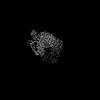




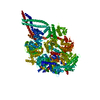
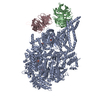
 PDBj
PDBj
